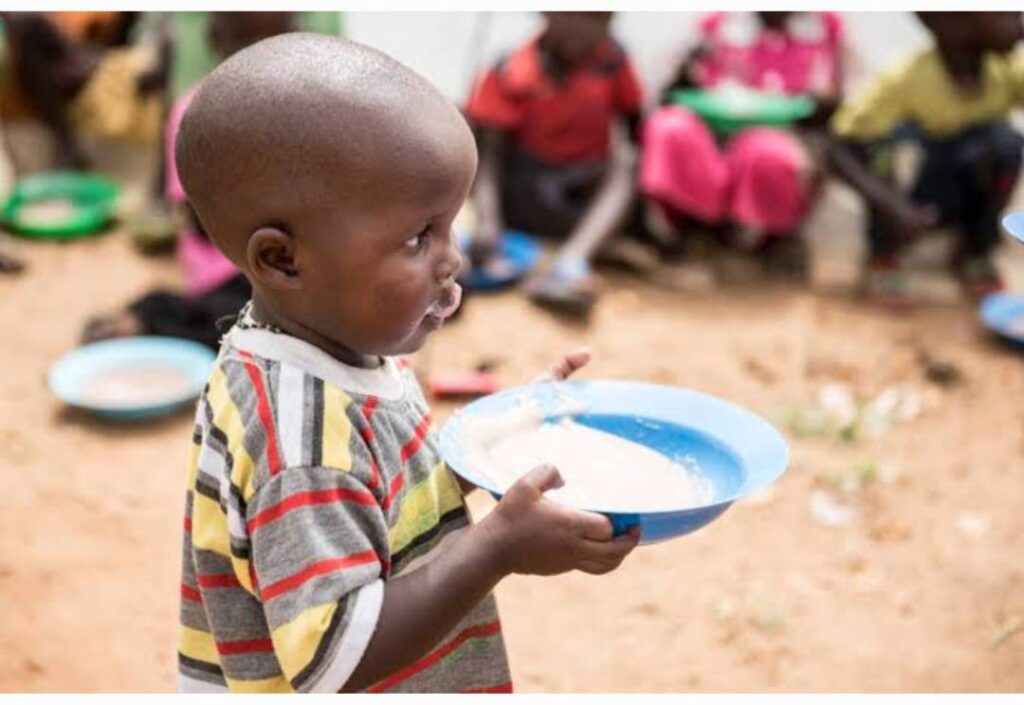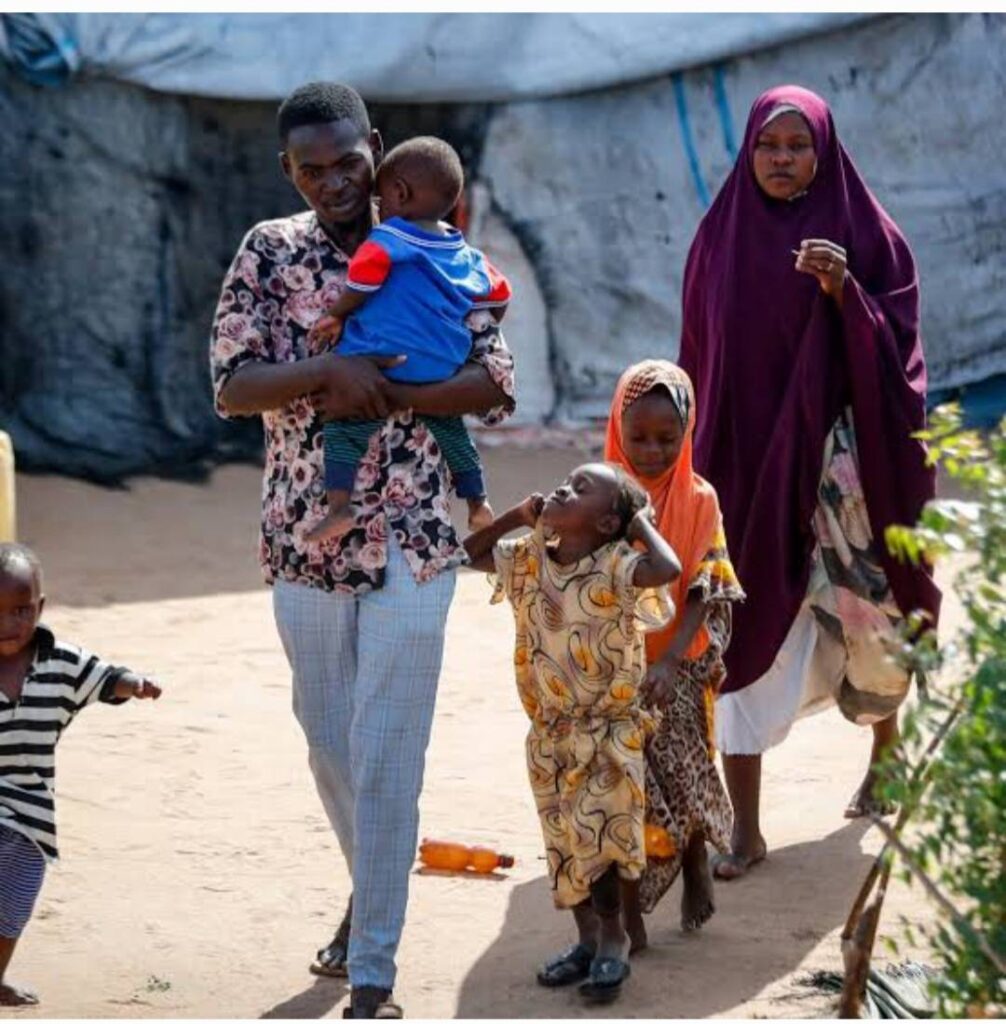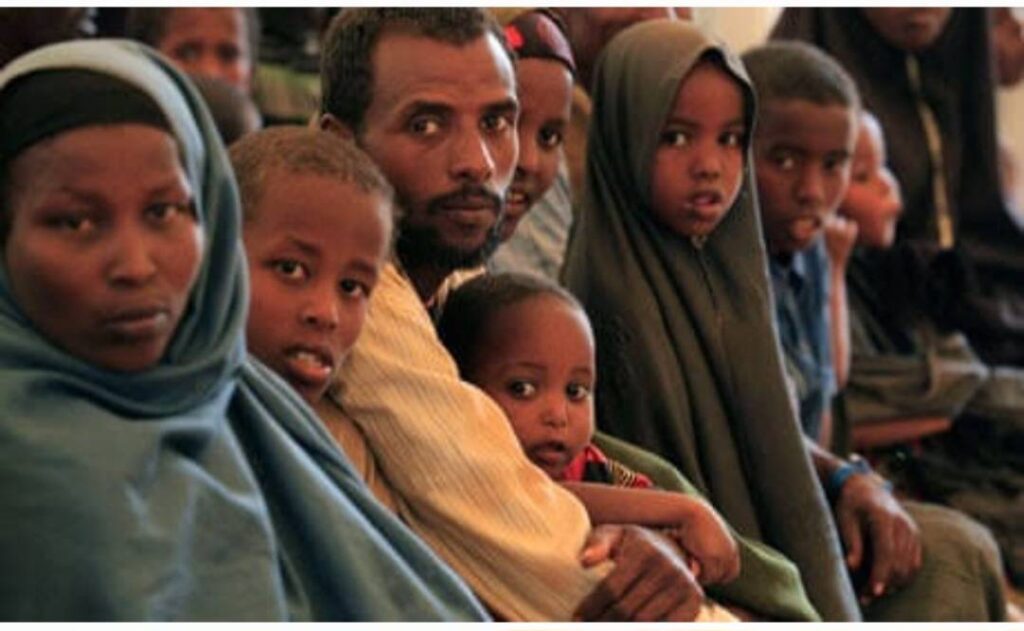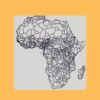“It’s just eating boring food, sleeping, lying with a woman, getting her pregnant. The children that come out of that don’t get a good education – what are they to do?” – Osman
By Obi Anyadike
A severe funding shortfall has forced the UN’s World Food Programme (WFP) to slash food rations and halt cash transfers to all refugees in Kenya, threatening the well-being of already vulnerable households.
This month, 630,000 people in the Dadaab, Kakuma, and Kalobeyei refugee camps will receive only 40% of the recommended minimum calorie intake needed to stay healthy. The cuts began in May.
WFP has also stopped its “bamba chakula” e-voucher system, a key initiative augmenting the regimented monthly rations that are typically made up of cereals, pulses, and cooking oil. The voucher allows refugees to buy more nutritious fresh produce like vegetables and milk from designated shops.
The cuts to both food and vouchers were imposed with little warning, people in Dadaab – Kenya’s largest refugee settlement – told The New Humanitarian. They also came on the heels of heavy flooding in April, which displaced 20,000 people and drove up prices in local markets, deepening everyone’s despair.
“We were all in shock. We couldn’t believe they’d done the cuts,” said Mohammed Jamal, a Dadaab refugee youth leader. “It has affected everybody. Shop-owners in the market depend on the vouchers and borrow against sales – they’re affected as well.”
The last time refugees in Kenya received a full ration was in 2018, according to a WFP statement sent to The New Humanitarian. In July 2023, the quantity of food was reduced from 80% to 60% of minimum needs, and then down to 50% in February 2024.
But there have been other periodic cuts, triggered by similar funding shortfalls, stretching back more than 25 years, almost from when Dadaab was established.
The value of bamba chakula (“get your food” in Swahili) has also fluctuated – and has failed to match inflation. In September 2022, it was worth roughly $8 per person and lasted households on average less than three weeks. The value has since halved, with April’s instalment the equivalent of under $4 per person.
The food shortages are already straining community relations among the 380,000 people in Dadaab’s three-camp complex. “We’re seeing people robbing each other, and that’s a result of the food cut happening without any notice,” said a refugee rights advocate, who asked not to be named. “People are robbing, and can even kill.”

Long-lasting nutritional crisis
WFP needs $72.8 million to resume cash transfers and full food rations for the next six months. With funding in place, it could “mobilise food quickly”, using regional markets and the Global Commodity Management Facility – a rapid financing mechanism – the agency said.
But the generally poor nutrition rates among refugees reflect the damage done by long-term shortages. In 2022, a joint assessment mission by WFP and the UN’s refugee agency, UNHCR, found a “steady and significant increase in malnutrition cases across all the camps” – with admission rates to stabilisation centres in Dadaab particularly worrying.
“Very high” levels of anaemia were also reported, associated with micronutrient deficiencies, as a result of households missing meals “or relying on cereals as the bulk of the meal with minimal or no dietary diversification”, the assessment said.
It is too early to determine the health impacts of the latest round of ration cuts, but they could be on their way. “Our concern is that we might see an increase of malnutrition cases in all age groups, especially in children and vulnerable populations,” said Ilse de Boer, Médecins Sans Frontières team leader in Dadaab’s Dagahaley camp.
She told The New Humanitarian that she was also worried about new refugee arrivals – fleeing war and drought in Somalia – whose health is already likely to be compromised. Some have moved in with family members, stretching meagre resources even thinner. Others waiting to be registered receive only limited assistance.
The ending of bamba chakula has rippled through Dadaab’s economy. The WFP/UNHCR assessment estimated that 30-40% of households borrow from traders to tide them over from month to month as a result of the reduced purchasing power of the vouchers.
“Before, you could borrow from the traders, but now they have also been affected,” said Abdirazaq Miftah, a deputy youth chairman in Dadaab. “So we don’t have money – and neither do they.”
Bamba chakula has provided important nutritional support to vulnerable household members – often used to buy milk to give to children, and make porridge for the elderly. “The elderly, who don’t have teeth to chew wheat and millet, depend on porridge – you can imagine what their situation is like,” said refugee Daud Osman, a disability advocate.
“It could be that they drank a cup of porridge yesterday, ate nothing today and the previous night, and are still hungry,” he told The New Humanitarian. “There is severe malnutrition in those families.”
Not every family is dependent on the aid provided by relief organisations. Some refugees manage to do a little farming, or run informal businesses. Others find work among the aid agencies and NGOs operating in the camps, but pay is extremely low compared to what local Kenyan staff earn, people in Dadaab complained.
“The argument they use is that we provide free food, free water, free health and education, so you should accept that,” said Miftah, the deputy youth chairman.
He calculates that only about a third of households have someone earning any income. “Every year, around 2,500 teenagers leave higher education, but there are not enough jobs, so only a few hundred find work,” he said.

The Dadaab ‘prison’
Kenya’s strict encampment policy prevents refugees from leaving the isolated camps to job search. As a result, a number of people in Dadaab described it as a “prison”, where people are aid dependent, and unable to contribute to the broader economy or fulfil their potential.
“We are not free. I am not doing anything that advances myself,” said Osman. “It’s just eating boring food, sleeping, lying with a woman, getting her pregnant. The children that come out of that don’t get a good education – what are they to do?”
In what has been trumpeted as a U-turn in refugee policy, Kenya last year announced a multi-million dollar donor-funded initiative that could potentially transform the lives of refugees in the overcrowded, and chronically underfunded Dadaab and Kakuma camps.
Dubbed the Shirika Plan, it aims to turn the camps into thriving self-reliant communities, where refugees can live, work, and set up businesses among their local hosts.
But concerns have been voiced since the plan’s launch over the government’s lack of consultation with camp residents and local communities, and over the limits that existing legislation places on freedom of movement and work opportunities – all of which undermine any promises of integration.
Under the 2021 Refugee Act, most refugees will only be able to reside in “designated areas” – specifically the two economically deprived counties of Garissa and Turkana, where Dadaab and Kakuma are located.
“I’ve been living here for 30 years,” said Osman. “For my future to be limited to Dadaab, without getting any opportunity to work, to further my education, to do a trade/business, that is my worry – and my biggest fear.”

This article was first published by the New Humanitarian:

